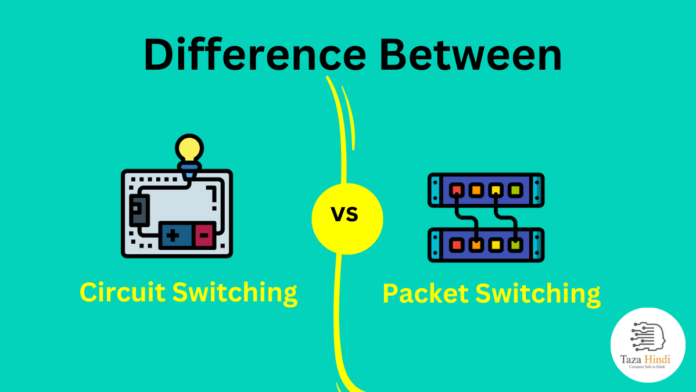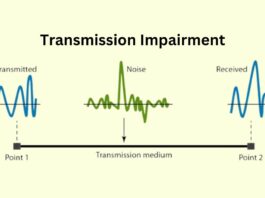Communication networks play a crucial role in our modern world, enabling us to connect and exchange information across vast distances. Two fundamental methods used in these networks are circuit switching and packet switching. In this article, I will give you complete information about these two techniques, starting with basic concepts of Circuit Switching and Packet Switching, their applications, advantages, disadvantages and explore the differences between circuit switching and packet switching. By understanding all these things properly, you can gain insights into the strengths and weaknesses of each approach and their relevance in different scenarios.
Importance of communication networks
Before delving into the specifics of circuit switching and packet switching, it is essential to acknowledge the importance of communication networks in our society. These networks form the backbone of our interconnected world, facilitating seamless communication and information exchange between individuals, businesses, and organizations. Communication networks enable us to make phone calls, browse the internet, send emails, stream videos, and engage in countless other activities that have become integral parts of our daily lives.
What is Circuit Switching?
Circuit switching is a traditional method used for establishing a dedicated communication path between two parties. In a circuit-switched network, a physical connection is created between the sender and the receiver for the duration of the communication session. This connection remains open throughout the entire conversation, ensuring a continuous and uninterrupted flow of data.
Basic concept of circuit switching
The fundamental concept behind circuit switching is the establishment of a dedicated path between the sender and the receiver. When a communication session is initiated, the network reserves a dedicated channel, or “circuit,” for the duration of the conversation. This circuit remains exclusively available to the participants, regardless of whether data is being transmitted or not. The dedicated nature of circuit switching ensures that the bandwidth allocated to the connection remains constant, providing predictable and consistent performance.
Also Read : How to Learn MongoDB from Scratch
How circuit switching establishes a dedicated communication path ?
When a call is made using circuit switching, the network allocates a dedicated path from the sender’s device to the receiver’s device. This path consists of a series of interconnected switches and transmission links. Once the connection is established, the switches along the path set up temporary connections between themselves, effectively creating a continuous link between the sender and the receiver. As a result, the participants can communicate in real-time, with minimal delay and guaranteed bandwidth.
Where circuit switching is commonly used?
Circuit switching is commonly used in traditional telephone networks, also known as the Public Switched Telephone Network (PSTN). In PSTN, circuit switching ensures reliable and high-quality voice communication by establishing dedicated channels for each call. Additionally, circuit switching is utilized in certain specialized applications, such as dedicated leased lines for businesses that require constant and dedicated connectivity.
Advantages of Circuit Switching
Circuit switching offers several advantages in certain scenarios:
- Guaranteed Quality: Circuit switching guarantees a consistent quality of service, as the dedicated path ensures a stable and predictable connection without variations in latency or bandwidth.
- Real-Time Communication: Circuit switching enables real-time communication, making it suitable for applications like voice and video calls, where immediate interaction is essential.
- Minimal Packet Loss: Since the entire circuit is dedicated to a single conversation, there is minimal packet loss, resulting in high reliability.
Also Read : Difference Between Modem and Router
Disadvantages of Circuit Switching
However, circuit switching also has its limitations:
- Inefficient Use of Resources: Circuit switching requires the reservation of dedicated resources for the entire duration of the communication, regardless of whether data is being transmitted or not. This can result in inefficient utilization of network capacity.
- Limited Scalability: Circuit switching is not easily scalable, as each connection requires a dedicated circuit, making it challenging to accommodate a large number of simultaneous connections.
- High Cost: Establishing and maintaining dedicated circuits can be expensive, especially for long-duration communications or in networks with high traffic variability. The need for dedicated resources throughout the entire conversation can result in higher infrastructure and operational costs for service providers.
What is Packet Switching?
In contrast to circuit switching, packet switching is a more modern approach to data transmission in communication networks. In packet switching, data is broken down into smaller units called packets, which are then independently routed through the network to their destination. Each packet carries a portion of the original data, along with information about its source, destination, and sequencing.
Basic concept of Packet switching
The fundamental concept behind packet switching is the division of data into smaller packets that can be transmitted independently. When data is sent using packet switching, it is divided into manageable units, each with its own header containing routing information. These packets are then transmitted individually across the network and can take different routes to reach their destination. At the receiving end, the packets are reassembled to reconstruct the original data.
Also Read : Difference Between Binary Tree and Binary Search Tree
How packet switching breaks data into smaller packets for transmission?
When data is transmitted through packet switching, it is first divided into smaller packets. This process involves breaking down the data into fixed-size units or variable-sized units, depending on the specific packet switching protocol used. Each packet is assigned a header that includes information such as the source and destination addresses, sequencing information, and error detection codes. These packets are then independently routed through the network, making use of available resources and paths.
Where Packet switching is commonly used?
Packet switching is widely used in modern communication networks, including the Internet. It is the underlying technology that enables various online activities, such as web browsing, email communication, file transfers, and streaming services. Additionally, packet switching is also utilized in private networks, such as local area networks (LANs) and wide area networks (WANs), to facilitate efficient data transmission.
Also Read : Difference Between RAM and ROM
Advantages of Packet Switching
Packet switching offers several advantages in the realm of communication networks:
- Efficient Resource Utilization: Packet switching allows for the efficient use of network resources by transmitting packets independently. This means that multiple packets from different conversations can share the same network infrastructure, leading to better utilization of available bandwidth.
- Scalability: Packet switching is highly scalable as it can accommodate a large number of simultaneous connections. Since each packet is routed independently, the network can handle multiple conversations concurrently.
- Error Handling: Packet switching employs error detection and correction techniques at the packet level. If a packet is lost or damaged during transmission, it can be retransmitted or corrected at the receiving end, ensuring data integrity.
Disadvantages of Packet Switching
However, packet switching also has its limitations:
- Variable Quality of Service: Due to the shared nature of packet switching, the quality of service can vary depending on network conditions and congestion. This variability can result in variations in latency, bandwidth, and packet loss, which may affect real-time applications like voice and video communication.
- Packet Overhead: Each packet in packet switching carries additional header information, which increases the overall overhead. This overhead can impact the efficiency of the network, especially when transmitting small amounts of data or in networks with limited bandwidth.
- Complex Routing: Packet switching involves complex routing algorithms to determine the optimal path for each packet. This complexity increases as the network size and traffic volume grow, requiring robust routing protocols to ensure efficient packet delivery.
Also Read : How to create a website without paying any money
Difference between Circuit Switching and Packet Switching
The key differences between the Circuit Switching and Packet Switching are as under:
| Factors | Circuit Switching | Packet Switching |
| Connection Establishment | Circuit switching establishes a dedicated path for the entire duration of the communication. | While packet switching does not require a dedicated path and transmits data in packets independently. |
| Resource Utilization | Circuit switching reserves dedicated resources for the entire duration of the communication, regardless of data transmission. | In contrast, packet switching allows for shared resource utilization, making it more efficient in terms of resource utilization. |
| Quality of Service | Circuit switching guarantees a consistent quality of service throughout the communication session. | While packet switching offers variable quality of service depending on network conditions and congestion. |
| Scalability | Circuit switching is not easily scalable, as each connection requires a dedicated circuit, making it challenging to accommodate a large number of simultaneous connections. | Packet switching is highly scalable, allowing for multiple connections to share the network infrastructure. |
| Latency | Circuit switching offers low latency since the dedicated path is established before data transmission. | Packet switching introduces some latency due to the packetization and routing processes. |
| Application Suitability | Circuit switching is well-suited for real-time applications, such as voice and video calls, where immediate interaction is crucial. | Packet switching, with its ability to handle multiple connections and support various data types, is more suitable for data-intensive applications, such as file transfers and internet browsing. |
| Overhead | Circuit switching has minimal overhead since there is no need for packet headers or fragmentation. | Packet switching incurs overhead due to the additional headers and fragmentation required for packet transmission. |
| Reliability | Circuit switching offers high reliability with minimal packet loss since the dedicated path is continuously maintained. | Packet switching can experience packet loss due to network congestion or transmission errors, but error detection and correction mechanisms mitigate this issue. |
Also Read : How to Make Chicken Parmesan in 9 Easy Steps
Conclusion
Circuit switching and packet switching are two distinct methods used in communication networks. Circuit switching provides a dedicated and continuous communication path, ensuring guaranteed quality but with limited scalability and resource efficiency. On the other hand, packet switching breaks data into smaller packets, enabling efficient resource utilization and scalability, but with variable quality of service and increased complexity. The choice between circuit switching and packet switching depends on the specific requirements of the application and the trade-offs between quality, efficiency, and scalability.
FAQs
-
Is circuit switching still used today?
While circuit switching is not as prevalent as it once was, it is still used in certain applications and industries that require dedicated and reliable communication paths. For example, traditional telephone networks (PSTN) continue to rely on circuit switching for voice calls.
-
Which technology does the internet use: circuit switching or packet switching?
The internet primarily relies on packet switching for data transmission. Packet switching allows for efficient sharing of network resources and supports a wide range of applications and data types, making it suitable for the diverse needs of internet communication.
-
Can circuit switching and packet switching be used together?
In some scenarios, circuit switching and packet switching can be used together. For instance, Voice over IP (VoIP) systems often employ a combination of circuit switching for call setup and packet switching for data transmission during the call.
-
Which switching method offers lower latency?
Circuit switching generally offers lower latency compared to packet switching. Since the dedicated path is established in advance, there is minimal delay in transmitting data. Packet switching introduces some additional latency due to packetization, routing, and possible congestion in the network.
-
What is the future of switching technologies?
As communication networks continue to evolve, new switching technologies are emerging. One such technology is “packet switching with deterministic networking,” which aims to provide the benefits of packet switching while guaranteeing low latency and quality of service for real-time applications.



